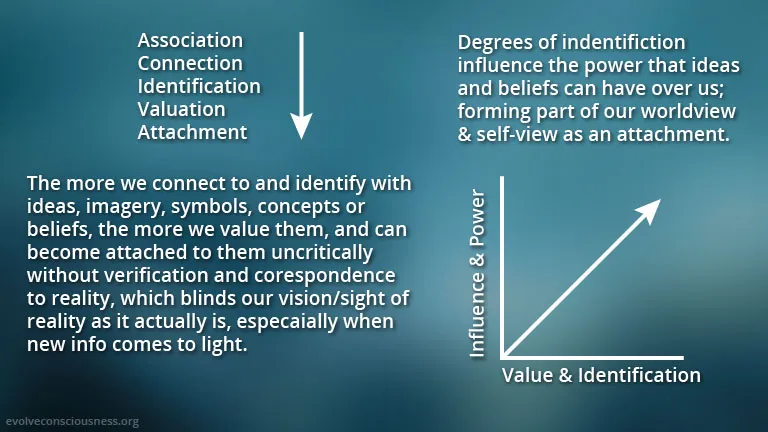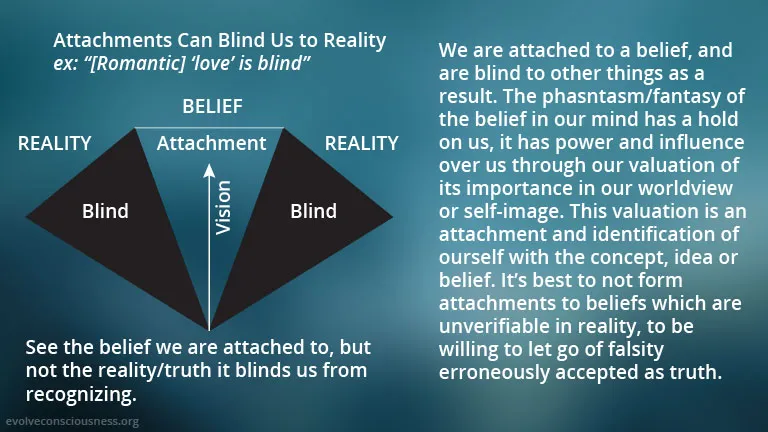First came reality, within which we exist. Consciousness exists in existence.
Second came knowledge of reality that we form within consciousness. Consciousness means (etymologically) to be with-knowledge.
Third are symbols or language that we create to reflect and communicate the knowledge about reality (or unreality).
Our ability to invent symbols reflect our attempt to describe the actual objective reality/existence we share in common, or the subjective reality/existence where we can imagine any number of things that don't actually exist.
The first symbols we created are pictographs which are images that directly reflect the objects in objective reality. A tree symbol represent a tree, and other corresponding symbolism we can associate and correspond with it's qualities or characteristics, such as hardness or biological life, for instance. We can then create more abstract secondary symbols through lines and curves which don't directly reflect any imagery from existence itself, such as letters used in an alphabet.
First we had direct observance of reality and nature reflected through symbols (pictographs), then alterations of those visible reflections towards more abstract models that were less corresponded with nature's visible processes (letters).
At the basic and most descriptive level, a symbol is an analogous references to reality through an image that represents reality. Abstraction allows us to create symbols (letters) and language that can be more precise in meaning, rather than have a wide range of possible symbolic interpretation (pictographs).
Symbols were primarily created to represent reality -- the nature and phenomena in reality that we can ostensibly demonstrate to exist. Thousands of years ago symbols were created to reflect and communicate about the objective reality so that we can understand what is around us, and share knowledge. To communicate about reality, we need to create symbols for the diversity, variability and multiplicity of existent things in existence (truths). We can also create symbols to communicate non-existent things we imagine (beliefs).
We are able to reflect and represent factual aspects of reality (tree, sun, water, etc.), or imagined images, concepts, ideas or belies that only hold form in our mind's eye. Some things actually exist in the objective universe (existence), while others are only potentials or fantasy that exist in the images and imagination of our subjective multiverse (consciousness). Our subjective imagination can create many phantasmal (fantasy) images. We can create multiple parallel universes that only exist within our individual consciousness, but not in the universal existence we share in common.
Our individual perception of reality (the maps we all make) can be in alignment, harmony, balance, equilibrium or non-contradiction with the objective reality/existence (the territory that is). We can also invent and create fantastic imagery through the imagination factory powered by the engine of consciousness.
The first order of symbols we create from consciousness, require us to observe nature/reality/existence. These symbols reflect the natural science of observation in nature and the processes/systems within it. They reflect reality that can be demonstrated. In symbolism and symbolic representation, we can even represent aspects of ourselves, our psyche, and communicate about the nature and being of consciousness (psychology). Symbols can reflect descriptions of the inner-working of consciousness that exists in existence/reality. Demonstrating qualities, characteristics, attributes and properties of the psychological dimension can be communicated and understood.
The second order of symbols are potential attempts to imagine what could be real, but only reflect imagery in our consciousness, from our powerful imagination. These are beliefs that exist in subjective consciousness, but aren't demonstrable in objective existence.
The beliefs we invent or accept don't necessarily reflect reality/existence/truth. In failing to distinguish between demonstrable, veritable, veracious, verifiable truth (veritas), we can mistake a belief as "truth" because we have faith, trust and loyalty in a belief we have identified with, value, and become attached to, wanting it to be true.

The more we associate with and connect to a belief or idea, the more we potentially identify with it and take it into not only our world-view, but our self-view. We then highly value these beliefs or ideas. This can lead us to become quite attached to beliefs, and not want to let go of them if a contradiction arises between a demonstrable truth in objective reality in the external existence and our imagined subjective reality from internal consciousness.
If our perceptual map of reality is not aligned with the territory of reality, we can enter a cognitive dissonant mode and refuse to accept the actual reality that is, because we don't want to lose the valued beliefs we invented or accepted to try to make sense of the world or ourselves -- that we identify with and provide us with value and meaning in our lives.

It's not always that we have or hold ideas or beliefs, but that these ideas or believe have a hold on us. We can become uncritically attached, not wanting to revise and verify what we believe, mistaking it as something "true", which results in us rejecting what is true because we become willfully blind to seeing things as they actually are in reality.
New information that is true is ignored, denied, rejecting or deflected in cognitive dissonance, favoring to hold onto the highly valued old information that gave us a false sense of grounding to make sense of the world (worldview) or make sense of ourselves (self-view, sense of self). The more we value and identify with something, the more potential influence and power it will have over us to hold us in it's grasp.
Many beliefs are influenced and conditioned into us from the current condition of society, accepted uncritically as the truth, because our inner vision, our thinking capacities, are not functioning properly to detect the falsity.
Our parents and schools feed us information that gets assimilated and believed in, trusted in, where we put our faith into it and become loyal to it. Conditioning into accepting information without processing it to understand it properly, is a form of mind control, brainwashing, where our mind i s being controlled by others because we are not thinking for ourselves.
We must be willing to unlearn what we have uncritically learned, and be ready to revise old information with new information, to demonstrate the truth about an aspect of reality before accepting such as a reality. Simply accepting something and believing in it, doesn't make it true.
Thank you for your time and attention. Peace.
If you appreciate and value the content, please consider: Upvoting, Sharing or Reblogging below.
 me for more content to come!
me for more content to come!
My goal is to share knowledge, truth and moral understanding in order to help change the world for the better. If you appreciate and value what I do, please consider supporting me as a Steem Witness by voting for me at the bottom of the Witness page; or just click on the upvote button if I am in the top 50.